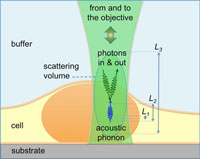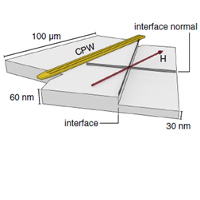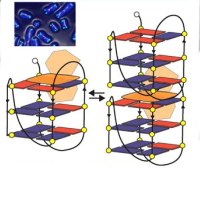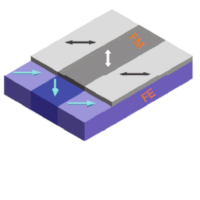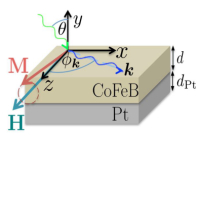Strongly correlated magnetic systems
Strongly correlated magnetic systems
Strongly correlated systems, are subject of intense research nowadays because of their uncommon properties due to complex interactions arising from coupling of lattice, spin and charge degrees of freedom. This research concerns several classes of materials, topics and techniques. Multiferroic, manganites, perovskite oxides, iron based superconductors, ruthenates, pinictides, vanadates are between the studied materials. The goal is to study the influence of electronic, chemical, structural properties on magnetism, spin dynamic and conductivity from the fundamental aspect to industrial application and devices.
|
The effects of symmetry breaking at free surfaces of ABO 3 perovskite epitaxial films can be combined with substrate-induced epitaxial strain to tailor at will the electron occupancy of in-plane and out-of-plane surface electronic orbitals. Experiment performed at the BACH beamline. D. Pesquera et al. Nature
|
The number of subjects touched in this research, is quite wide: influence of inhomogeneities and clusterization on the spin dynamic in half doped manganites; topologically protected conducting surface states of so-called topological insulators; metal insulator transition and anomalous electronic properties in highly correlated 3d and 4d oxides magnetic transition and anisotropies in interfaces (AFM/FM, FM/FM.); proximity magnetic effect dilute magnetic semiconductors and their epitaxial interfaces (GaMnAs, Fe/GaMnAs); topological insulators and their interface/doping with magnetic elements; orbital hybridization effects on the magnetic and superconducting properties of iron-based superconductors and in multiferroic |
We use mainly synchrotron x-ray spectroscopies, neutron diffraction and neutron scattering, with and without polarization analysis. In particular the determination of magnetic structures are obtained by high resolution neutron diffraction and the study of spin dynamic, spin density, frustration and short range dynamic correlations in manganites and ruthenates, has been done by neutron scattering with and without polarization analysis. Interfaces properties and orbital hybridizations as well as electronic properties has been studied by mean x-ray absorption spectroscopy and soft x-ray spectroscopy. The analysis of neutron data are supported by calculations using ab-initio, density functional theory-based methods and classical, force field-based methods to perform structure - including electronic and spin aspects, lattice dynamics and molecular dynamics simulations.

